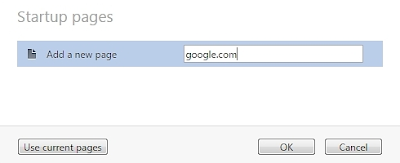Delete Haze Ransomware from Firefox
More error whic Haze Ransomware causes
0x000000D9, 0x80248010 WU_E_DS_CANNOTREGISTER The data store is not allowed to be registered with COM in the current process., 0x8024CFFF WU_E_DRV_UNEXPECTED A driver error not covered by another WU_E_DRV_* code. , 0xf081F CBS_E_SOURCE_MISSING source for package or file not found, ResolveSource() unsuccessful, 0x00000056, 0x0000007F, 0x8024F003 WU_E_INVALID_EVENT The XML in the event namespace descriptor could not be parsed., Error 0xC1900101 - 0x30018, 0xf0813 CBS_E_INVALID_INSTALL_STATE install state value not acceptable, 0x80240030 WU_E_INVALID_PROXY_SERVER The format of the proxy list was invalid., 0x0000000C, 0x80244007 WU_E_PT_SOAPCLIENT_SOAPFAULT Same as SOAPCLIENT_SOAPFAULT - SOAP client failed because there was a SOAP fault for reasons of WU_E_PT_SOAP_* error codes., 0x000000B9, 0x00000074
Get Better Technical Analysis Of Haze Ransomware
Haze Ransomware is another computer virus that makes your Windows System Possible Steps For sick. Its being a persistently nasty virus that keeps you from away from functioning normally and often requires something powerful to Uninstall it. This harmful virus Haze Ransomware is design relentlessly to infect your Windows System files, alter the way your computer operates or stop it from working altogether. Its estimated that the Haze Ransomware infect more than thousand millions of computer users, that now operate over the Internet.
Haze Ransomware find its way with sharing of free music file, online games, picture files with users. It also get distributed with different rogue software that get installed automatically into the Windows System, opening junk email attachments, installing mainstream software without reading its entire terms and license agreements. Haze Ransomware is mainly programmed to harm your Windows System by Deleting or modifying your Windows System files, reformatting your hard drive and so on. Others viruses simply replicates themselves or flooded a network with traffic, makes impossible to perform any online activity. Therefore, its wise to Uninstall Haze Ransomware as quickly as possible from your Windows System.
Help To Uninstall Haze Ransomware Possible Steps For From Windows Windows System Control Panel
Windows XP :-
At first click on the Start button -> Open Control Panel -> Go to Add or Uninstall Programs -> Locate Haze Ransomware and tap Uninstall Haze Ransomware.
Windows Vista :-
Tap Start button -> Open Control Panel -> Go To Uninstall Program -> Uninstall a Program Lies in Programs -> Find click on Uninstall Haze Ransomware.
Windows 8/ 8.1
Right Click -> Menu icon in the Left bottom corner -> Select Control Panel -> Select the Uninstall Program statement -> Uninstall Haze Ransomware.
Windows 10 :-
At first click on Win + X -> Windows Power Menu -> Click On Control Panel -> Tap Uninstall a Program -> Uninstall Haze Ransomware.
Uninstall Harmful Haze Ransomware Extensions From All Browsers
Mozilla Firefox :-
At first go to Mozilla Firefox and select Add-ons or press Ctrl + Shift + A together.
The list of all installed extensions as well as add-on gets opened on your screen.
Now, you have to select and Uninstall Haze Ransomware extensions.
Reset Mozilla Firefox :-
At first go to upper right corner of Firefox browser and tap Menu button and press Help.
Select the Troubleshooting Information option from Firefox Help Menu.
On that Troubleshooting Information, just click on Refresh Firefox option.
A dialogue box will appear before your screen and click Refresh Firefox button.
Open Google Chrome Click on its wrench icon -> Click Tools -> Extensions.
In that Extensions tab, select Haze Ransomware extensions and click on Trash icon.
Click on Uninstall button from confirmation dialogue box.
Reset Google Chrome :-
At first click on the Three stripes in Google Chrome Browser, select Settings option.
You will find show Advanced Settings option, in bottom of page, Then click on it.
Now, tap Reset Browser Settings options.
Again you have to click on Reset Option to Uninstall Haze Ransomware Possible Steps For.
First of all open Add-on Manager option, by going through Manage Add-ons, followed by Tools button.
Now, you have to find out Toolbars and extensions option in IE browser.
Here, just locate suspicious Haze Ransomware add-ons and extensions. Finally click on Disable option to Uninstall this threat permanently from IE browser.
Reset Internet Explorer :-
First of all click on the tools -> Internet Options.
Now, Internet Options dialogue box appears, tap Advanced tab -> Reset button.
In Reset Internet Settings, check Uninstall Personal Settings check-box, and tap Reset button.
Once you have followed this step, you just need to close and restart your Internet Explorer Browser.
Opera :-
At first click on the Customize and Control Opera button, located in the left hand part of Window. Select Extensions from drop down menu.
Select all harmful extensions from that list as Haze Ransomware, and tap Disable.
After that, you have to click the Customize and Control Opera icon and again and then select Settings.
Go to the On start-up present under Settings option.
Select options for Open a Specific page or Set of Pages option , and tap Set pages link.
Find all unwanted entries related to Haze Ransomware from Startup pages, click X button, and Enter preferred start page -> Ok.
Then after proceed with Search section under the Settings -> Choose Preferred Search Engine from list.
Finally Restart your Opera browser and check for any other issues.
Basic Guide To Uninstall Haze Ransomware From Task Manager
First of all press Alt + Ctrl + Del button to open your Windows task Manager.
Open Process Tab, once Windows Task Manger opens before your screen.
Select Malicious Haze Ransomware processes, and click on End Process button.
Clean Malicious Haze Ransomware Entries From Registry Editor
At first go to Start menu, and select run command by pressing Win + R keys from keyboard.
Here, type regedit → Ok , and open Windows Registry Editor.
Search for Haze Ransomware and Uninstall all corrupted entries related with Haze Ransomware.






































No comments:
Post a Comment